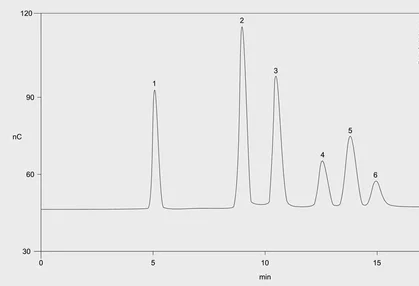Learn how Headspace Gas Chromatography improves pharmaceutical quality by managing OVIs. Includes GC-HS principles, method development, applications, advantages, and FAQs
In Headspace Gas Chromatography (GCHS) analysis, a sample is sealed in a vial, and the volatile compounds in the headspace (the gas phase above the sample) are allowed to equilibrate. These volatile compounds are then injected into the GC system for analysis.
GC plays a vital role in pharmaceutical development by improving product quality through the effective control of organic volatile impurities (OVIs) at a low level. In this article, I will discuss the principles of Headspace Gas Chromatography, its operational process, method development strategies, key applications, advantages, essential calculations, and include real-world case studies and frequently asked questions
Headspace Gas Chromatograph is the combination of GC (gas chromatograph) and HS (headspace). It is highly sensitive instrument and can detect even trace amounts of volatile compounds.
GC-HS = GC + HS
Related: How To Control Impurities In Pharmaceuticals: Get Mastery In …
It is a powerful analytical technique used to separate and analyse organic volatile compounds
In Headspace analysis, a sample is sealed in a vial, and the volatile compounds in the headspace (the gas phase above the sample) are allowed to equilibrate. These volatile compounds are then injected into the GC system for analysis. This method is especially useful for analysing the volatile components in solid or liquid samples, such as solvents, residual solvents, or perfumes in pharmaceuticals.
Headspace Gas Chromatography (GCHS) requires that the OVIs of interest have high volatility, while the rest of the sample/pharmaceutical is much less or non-volatile. GCHS is used for analysis of the following types of residual solvents in the pharmaceuticals/samples:
The following are the key components of GCHS:
1. Sample Vial and Sealing System
2. Headspace Sampler (HS Unit)

3. Carrier Gas Supply System
4. Gas Chromatograph (GC) Instrument with Detector and Data System (Chromatography Software).
Follow the following procedure to analyse the sample by GCHS:

In GCHS analysis, the selection of a diluent is crucial for ensuring accurate results and preventing problems like overloading the detector or interfering with the analysis due to carry-over. The following points to be considered while selecting the GC-HS diluent:
Purity
Ensure that the diluent used is of high purity, free from contaminants that might affect the analyte quantification or interfere with the detector response. Only GCHS grade solvents should be used for sample and standard preparation
Volatility
The diluent should have a boiling point higher than the analytes of interest but not so high that it won’t volatilize in the headspace analysis. The diluent must be volatile enough to pass through the GC column without affecting the chromatogram. Typically, highly volatile solvents like water, dimethyl sulphoxide (DMSO), N, N-dimethylformamide (DMF), and N, N-dimethylacetamide (DMAC). These solvents should not have any major components that overlap with your analytes in terms of retention time.
Chemical Inertness
The diluent should be chemically inert to the sample and the system components, meaning it should not react with the analytes, the column stationary phase, or other system parts.
Solubility of Sample Components
The diluent should ideally dissolve the analytes well enough to create a homogenous mixture. If the analytes are poorly soluble in the diluent, this could lead to uneven distribution in the headspace and inaccuracies in quantification.
Water Content
If using water as a diluent, it is crucial to consider the effect of water vapour in the headspace. High water content could lead to the formation of aqueous vapour in the headspace, which might compete with other volatile analytes for vaporisation.
GCHS Diluents
Typical GCHS diluents are water, dimethyl sulphoxide (DMSO), N, N-dimethylformamide (DMF), and N, N-dimethylacetamide (DMAC)
When the mass detector is used with GCHS then it is called GCHSMS. It is used for the identification and structure elucidation of unknown organic volatile impurities
GCHSMS = GCHS + Mass Detector
Headspace Gas Chromatography (GCHS) is an indispensable analytical technique in pharmaceutical development, particularly for monitoring and controlling organic volatile impurities (OVIs). Its ability to provide accurate, sensitive, and solvent-free analysis makes it ideal for ensuring product safety and regulatory compliance. By understanding its components, principles, and method development strategies, analysts can effectively harness the power of GC-HS to enhance both product quality and process efficiency. With growing emphasis on quality assurance and risk mitigation, GC-HS continues to be a cornerstone in modern pharmaceutical analysis
Related:
GC-HS is the combination of the two systems GC (gas chromatograph) and Headspace (HS). It is used for analysis of volatile impurities present in the pharmaceuticals
Headspace Gas Chromatography
When the mass detector is used with GC-HS then it is called HC GC-MS. It is used for the identification and structure elucidation of unknown organic volatile impurities
Separating and analysing organic volatile impurities in pharmaceuticals at traces level using GC with headspace is called headspace gas chromatography
Analysing organic volatile impurities in pharmaceuticals at trace levels using Headspace GC is called headspace GC analysis
Organic Volatile Impurities (OVIs) are volatile organic compounds such as methanol, ethanol, acetone, toluene, etc. that may be present as impurities or contaminants in pharmaceuticals, chemicals, or other products.
Quick Links